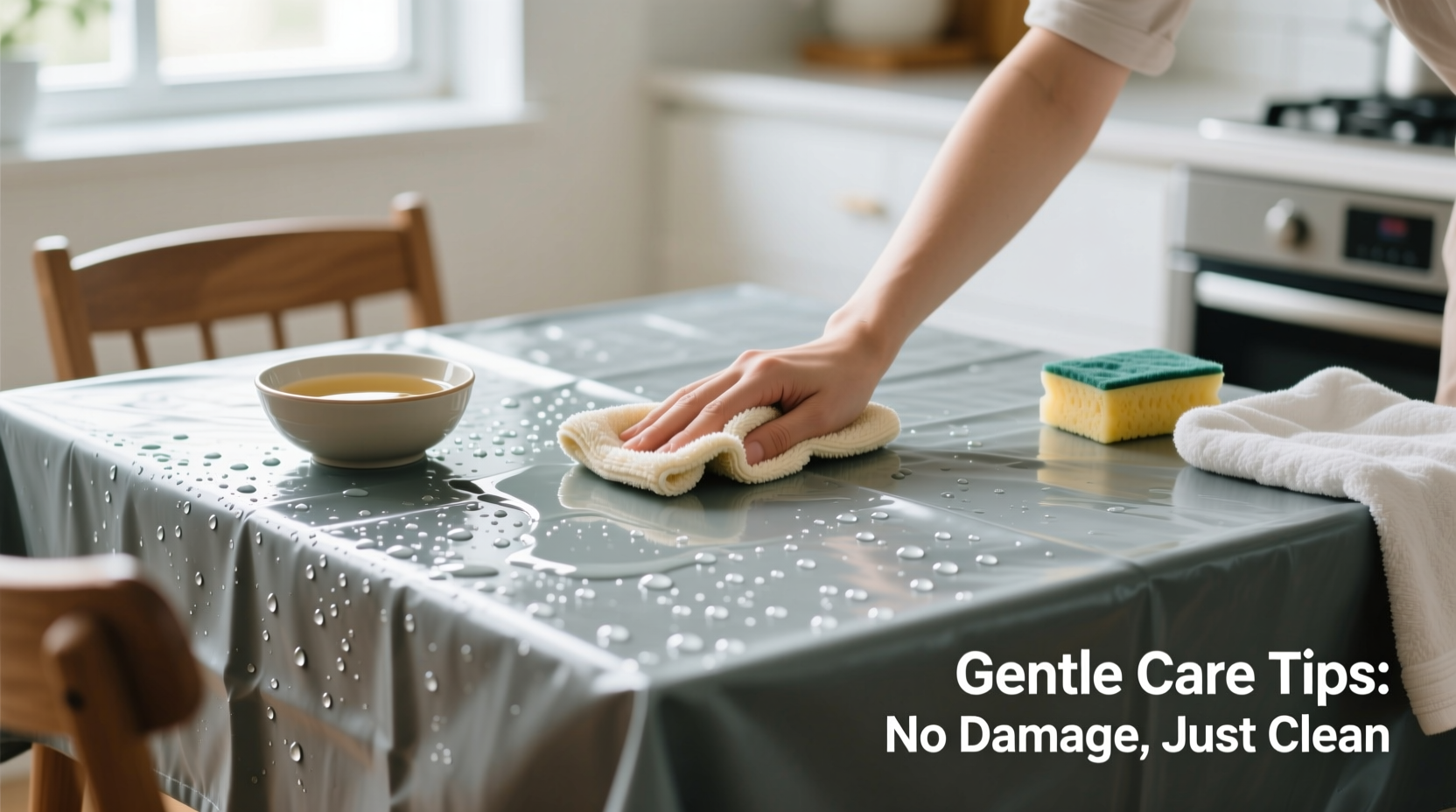Waterproof dining tablecloths are a practical choice for homes, restaurants, and outdoor gatherings. Their resistance to spills, stains, and moisture makes them ideal for everyday use. However, improper cleaning can compromise their protective coating, lead to discoloration, or cause premature wear. The key to maintaining both function and appearance lies in using the right techniques—gentle yet effective. This guide outlines proven methods to keep your waterproof tablecloth looking fresh while extending its lifespan.
Understanding Waterproof Tablecloth Materials

Before cleaning, it’s essential to know what kind of material you’re working with. Most waterproof tablecloths are made from one of three base fabrics: polyester, vinyl (PVC), or polyurethane-coated cotton. Each has unique properties that respond differently to water, detergents, and heat.
- Polyester-based cloths: Often treated with a durable water repellent (DWR) finish. Lightweight and machine-washable if handled correctly.
- Vinyl (PVC): Highly impermeable but sensitive to high heat and harsh scrubbing. Best cleaned by hand.
- Polyurethane-coated cotton: Offers a fabric-like feel with water resistance. Requires mild cleaners to preserve the coating.
Cleaning methods must align with the material type. Using bleach on vinyl, for example, can cause cracking. Similarly, machine drying at high temperatures may melt adhesive layers in coated fabrics.
Step-by-Step Guide to Safe Cleaning
Follow this detailed process to clean your waterproof tablecloth effectively without risking damage.
- Shake Off Loose Debris: Take the tablecloth outdoors and shake it vigorously to remove crumbs, dust, and dry particles.
- Pre-Treat Stains: Use a soft cloth dampened with warm water and a drop of mild dish soap to gently dab at spots like wine, oil, or food residue. Avoid vigorous rubbing.
- Wipe Down the Surface: For daily maintenance, wipe the entire surface with a soapy sponge or microfiber cloth. Rinse the cloth frequently to avoid spreading grime.
- Rinse Thoroughly: Dampen a clean cloth with plain water and go over the surface to remove any soap residue, which can attract dirt over time.
- Dry Flat or Hang: Lay the tablecloth flat on a clean towel or hang it over a clothesline. Avoid direct sunlight, which can degrade plastic-based coatings.
For machine-washable types (typically polyester blends), place the cloth in a front-loading washer on a gentle cycle with cold water and a small amount of non-abrasive detergent. Never use fabric softener—it can clog pores in the waterproof layer.
Do’s and Don’ts of Waterproof Tablecloth Care
| Do’s | Don’ts |
|---|---|
| Use mild dish soap or pH-neutral cleaners | Use bleach, ammonia, or abrasive cleaners |
| Hand wash with lukewarm water when possible | Soak vinyl cloths for extended periods |
| Dry away from direct sunlight and heat sources | Tumble dry on high heat |
| Store folded or rolled in a cool, dry place | Store when damp—this encourages mold growth |
| Iron on low heat with a pressing cloth (if fabric permits) | Apply direct heat from an iron to vinyl surfaces |
Real Example: How One Family Preserved Their Outdoor Tablecloth for Three Years
The Thompson family uses a large polyurethane-coated tablecloth for weekly backyard dinners. After two seasons, they noticed yellowing along the edges and stiffness in the fabric. Instead of replacing it, they consulted a local textile care specialist who recommended switching from chlorine-based wipes to a vinegar-water solution (1:3 ratio) for routine cleaning.
They began wiping the cloth weekly with the vinegar mix, rinsing with water, and air-drying in the shade. Within a month, the stiffness reduced, and no further discoloration occurred. Now in their third summer, the tablecloth remains functional and visually appealing—proof that consistent, gentle care pays off.
“Many people treat waterproof fabrics like disposable items, but with proper maintenance, these materials can last years longer than expected.” — Dr. Lena Patel, Textile Preservation Specialist, Home Fabric Institute
Checklist: Monthly Maintenance Routine
To keep your waterproof tablecloth in top condition, follow this simple monthly checklist:
- ☐ Shake out debris and inspect for stains
- ☐ Wipe entire surface with mild soapy water
- ☐ Treat stubborn spots with baking soda paste (mix with water) and gentle brushing
- ☐ Rinse thoroughly with clean water
- ☐ Air-dry completely before storing
- ☐ Store in a breathable cotton bag or pillowcase
- ☐ Check for signs of coating wear or peeling edges
Frequently Asked Questions
Can I use a pressure washer to clean a heavy-duty waterproof tablecloth?
No. Even though some tablecloths are marketed as durable, high-pressure water can delaminate coatings or stretch the fabric. Stick to hand wiping or gentle machine washing when approved.
Is it safe to use vinegar on all waterproof tablecloths?
Vinegar is generally safe in diluted form (one part vinegar to three parts water) for polyester and coated cotton. However, avoid using it on pure vinyl, as acidity may degrade the plasticizer over time. Always test first.
How often should I deep clean my waterproof tablecloth?
For regular household use, deep clean every 4–6 weeks. In high-traffic environments like cafes or during summer outdoor events, clean every 2–3 weeks to prevent buildup of grease and organic matter.
Preserve Functionality and Aesthetic Appeal
A waterproof tablecloth should not be seen as a short-term convenience item. With thoughtful care, it can remain both hygienic and attractive for multiple seasons. The most common reason for early replacement isn’t wear and tear—but improper cleaning practices. Avoiding harsh chemicals, managing exposure to heat and sun, and establishing a consistent cleaning rhythm are more impactful than occasional deep cleans.
Remember, the goal isn’t just cleanliness but preservation of the waterproof barrier itself. Once that layer is compromised, the fabric loses its primary benefit. By treating your tablecloth as a long-term investment rather than a disposable covering, you reduce waste and save money over time.









 浙公网安备
33010002000092号
浙公网安备
33010002000092号 浙B2-20120091-4
浙B2-20120091-4
Comments
No comments yet. Why don't you start the discussion?